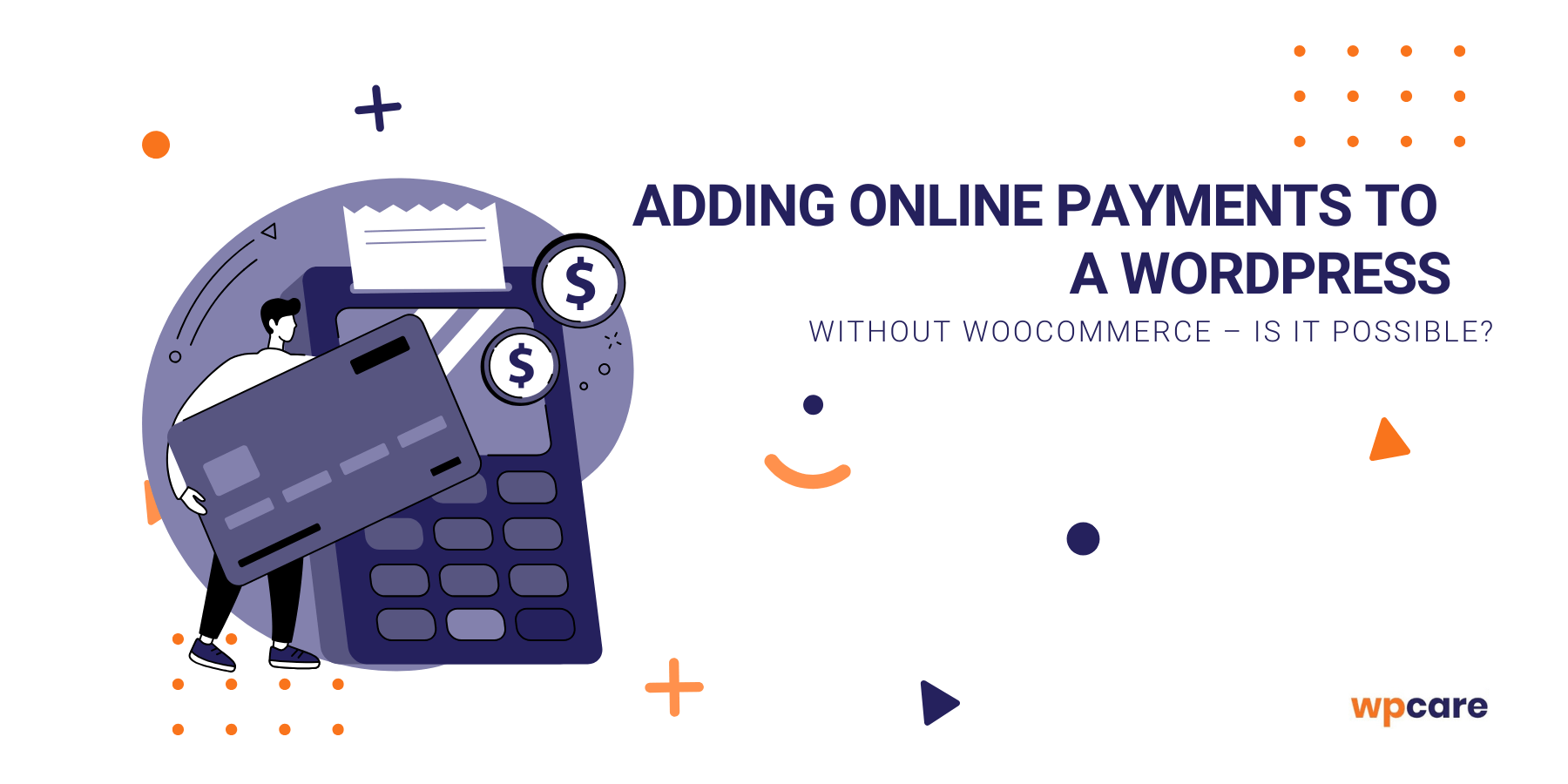Adding online payments to a website has become the standard – users expect convenience and the ability to complete transactions instantly. In the case of WordPress, the first thing that comes to mind is WooCommerce, the most popular e-commerce plugin. But not everyone needs a fully developed online store with a shopping cart and hundreds of settings. What if you only want to accept payments for a single product, a service, a consultation, or donations?
In this article, we’ll explore whether it’s possible to add online payments to WordPress without WooCommerce, what alternative solutions exist, and in which situations they might be a better choice than a full store system.

Is WooCommerce necessary for online payments?
WooCommerce is the most popular e-commerce solution for WordPress – and it’s no surprise, as it offers enormous possibilities. With it, you can build a fully functional online store with a cart, order system, coupon support, invoices, and shipping options. If you plan to sell many products, manage inventory, and build a complex purchasing path, WooCommerce will be a perfect fit.
However, this doesn’t mean that accepting online payments without WooCommerce is impossible. In many cases, installing such an extensive plugin is simply unnecessary – especially if you want to sell a single product, enable quick payment for a service, or accept donations. In these situations, instead of a full-fledged “store”, a simple integration with a payment system is enough – via a dedicated plugin, a form, or even a simple PayPal or Stripe button.
So the key question is not “Do I need WooCommerce?” but rather “What are my needs – do I require a full online store, or just a simple payment mechanism?”

What is WooCommerce? Build a store on WordPress
Alternative methods of adding payments to a website
Although WooCommerce is the most common choice, in many cases it turns out to be too “heavy”. If your goal is not to run a fully developed online store, you can use simpler methods. WordPress gives you plenty of options – from dedicated plugins, through integrations with forms, to direct payment buttons provided by operators.
Payment plugins
There are many plugins available on the market that allow you to add payments without implementing the entire WooCommerce system. Such tools are lighter, easier to configure, and often focus on a single payment gateway.
An example is WP Simple Pay, which integrates WordPress with Stripe and allows you to quickly create payment or subscription buttons. Similarly, Stripe Payments lets you insert a payment form anywhere on your site.
For those using PayPal, PayPal Buy Now Button will be a great choice, enabling you to instantly add a simple “Buy Now” button without additional complications. These plugins are especially useful for selling single products, services, or accepting donations.
Forms integrated with payment gateways
Another solution is forms that, in addition to standard fields (e.g., name, email, order description), can be connected to payment systems. Plugins such as Gravity Forms, WPForms, or even Contact Form 7 with the right extensions allow integration with PayPal, Stripe, Przelewy24, or PayU. This way, a user fills in the form and makes the payment immediately – without having to go through a cart or complex checkout process. It’s an ideal solution for training registrations, collecting booking fees, or for freelancers who want to let clients quickly pay an invoice online.
External payment providers
The simplest and fastest method is to use payment buttons offered directly by providers. Services like PayPal, Stripe, Tpay, Przelewy24, or PayU allow you to generate a simple HTML code with a payment button, which can then be pasted into your WordPress site – for example, under a product description, in a blog post, or on a “Pricing” page. The user clicks the button and goes directly to the provider’s secure transaction page. It’s quick and practical, though less flexible – harder to expand with additional options or integrate with CRM or invoicing systems.
When to consider simple payment integration?
- Selling single products or services: If you offer one e-book, an online course, or a downloadable photo pack, you don’t need to build a full e-commerce platform. A payment button or a form integrated with a gateway will be enough for users to pay and get access to the product quickly.
- Bookings and consultations: Freelancers, coaches, consultants, or specialists offering online services often only need a simple system for charging for appointments. Adding payment to a booking form not only automates the process but also reduces the number of unpaid reservations.
- Events, tickets, training sessions: Organizing workshops, conferences, or selling tickets to local events? In such cases, you also don’t need a full store. A registration form with integrated payment works perfectly – the participant fills in details and pays instantly.
- Donations and fundraising: Foundations, associations, and online creators often need a simple mechanism for receiving contributions. PayPal, Stripe, or Przelewy24 buttons are excellent here, enabling quick and convenient financial support without extra formalities.
Limitations and challenges of payments without WooCommerce
Simple online payment integrations have many advantages – they’re fast, intuitive, and don’t burden the site as much as WooCommerce. However, it’s important to remember these solutions also have limitations. Before you decide on a lightweight integration, it’s worth knowing the potential challenges you might face in the future.
- No cart and multiple product handling
The biggest limitation is the lack of an advanced shopping cart. If you add several products to your offer, users will have to pay for each separately. WooCommerce solves this automatically, allowing multiple items and a combined payment. - Limited reporting and analytics
Dedicated payment plugins or provider buttons usually only give basic information – e.g., who paid and how much. However, there are no full sales reports, conversion tracking, or Google Analytics integrations. If you want to analyze marketing campaigns in detail, WooCommerce offers much broader possibilities. - Integration with invoices and CRM
Companies that need automatic invoicing or CRM system integration may encounter difficulties. While WooCommerce has dozens of extensions supporting such processes, simple payment solutions often require additional third-party tools or manual data entry. - Fewer automation options
WooCommerce supports numerous automations – from email notifications to integrations with marketing tools or ERP systems. With simple payment integrations, you usually have to rely on manual actions or custom solutions. - Scalability for the future
A simple integration works great “at the start”. The problem arises when your business grows and suddenly you need additional features: multiple products, discount coupons, subscriptions, or shipping. At that point, migrating from a lightweight payment system to full WooCommerce may become inevitable.
Summary
Adding online payments to a WordPress site is possible both with and without WooCommerce – it all depends on your needs. If you’re selling multiple products and want advanced online store features, WooCommerce is the natural choice. But if your goal is quick and simple payments for a service, a ticket, or a donation, a lighter solution based on plugins, forms, or provider buttons will be more than enough.
The key is to match the payment system to your business model and growth plans. This way, you’ll avoid unnecessary complications, and your customers will enjoy a simple and secure way to pay. Remember – in the online world, convenience and payment speed often decide whether a user finalizes a purchase.
thanks to professional WooCommerce store managementGet a simple and fast payment system without the need to install WooCommerce.We’ll help you implement proven solutions – from payment buttons to gateway integrations – tailored to your business and your customers’ needs.
Order the service




















































